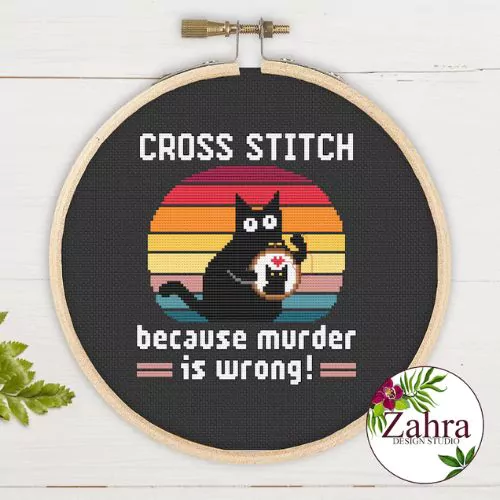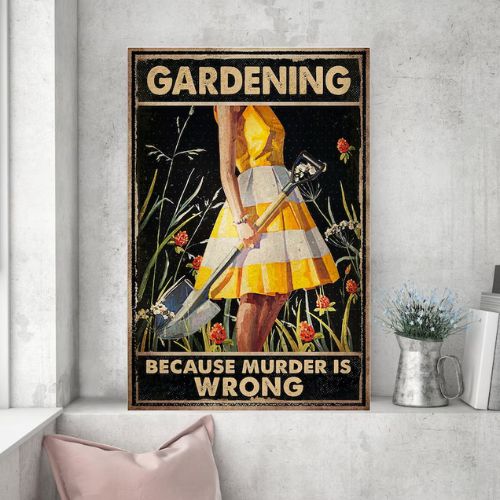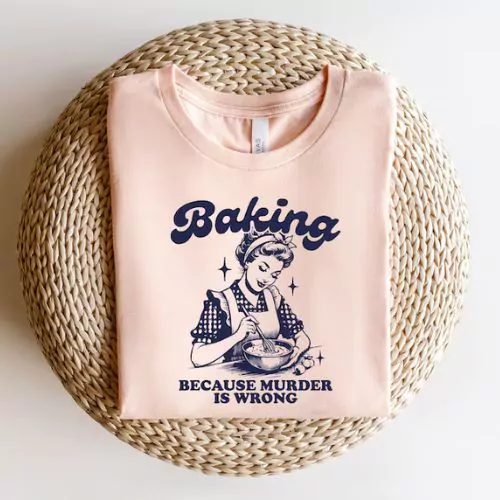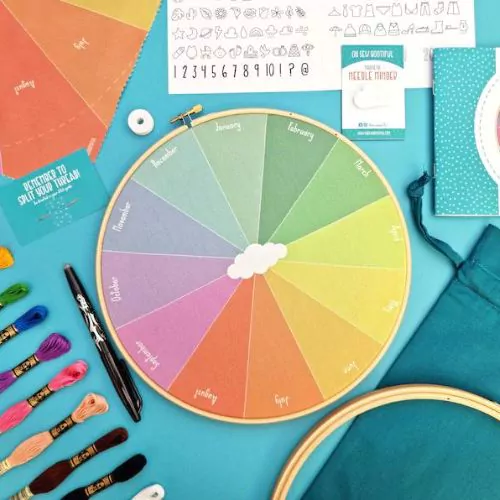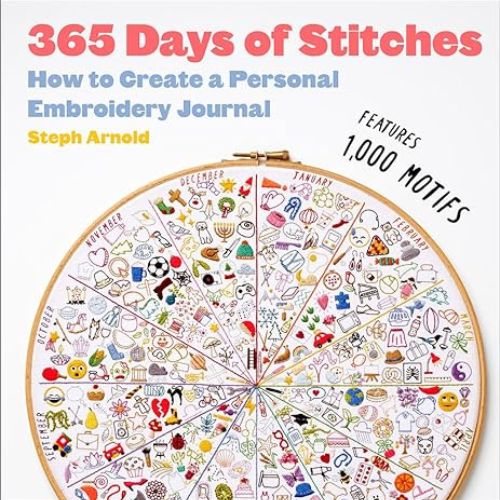Embroidery as therapy: 8 ways hand embroidery can boost your mental health and emotional wellbeing
I guess you saw these funny t-shirts, posters, aprons, or cross-stitch kits that say “…. because murder is wrong.” Crafters often joke about their hobbies and how they help them maintain mental sanity in a busy life. Some people choose gardening, others cooking. I use embroidery as a therapy to cope with stress and anxiety in my daily life.
Disclaimer: To cover the cost of creating free embroidery patterns and video tutorials for this blog, I do sometimes link to products. Please assume these links are affiliate links. If you choose to buy through my links then THANK YOU – it will make it possible for me to keep doing this.
Etsy has various items with funny quotes about crafts saving lives. These are my favorites:
It is said that every joke has a grain of truth. And the state of our mental health is not a joke at all. Instead, it should be taken very seriously. Arts and crafts, and hand embroidery as one of them, can play an essential role in boosting our mental health, reducing stress and anxiety, and helping us to cope with grief or trauma. We can use hand embroidery as therapy by creating daily mindfulness practice, training our patience and attention to detail, and in many other ways. Let’s see how hand embroidery can help our emotional wellbeing!
8 ways to use hand embroidery as therapy
1. Journaling
Daily journaling is a powerful tool for boosting our mental health. Journaling can reduce stress, improve our mood, increase higher school grade averages for students, and reduce time spent in hospitals for ill people.
Various types of journaling offer different benefits. To learn more about journaling and its benefits, read the article “5 Benefits of Journaling for Mental Health.”
Daily journaling with hand embroidery is slightly different from writing, but it works great! There are a couple of different ways to journal with stitches:
- Round embroidery journals where the hoop space is divided into twelve slices for each month. You choose an object for each day and embroider it in the space dedicated to its month. Steph Arnold explains this method in her book “365 Days of Stitches: How to Create a Personal Embroidery Journal”. You can also get an Embroidery Journal Kit with all the materials and instructions or download a digital pattern and a guide from Etsy.
- Embroider one word a day. Simply choose a word and embroider it on the fabric. Some years ago, I used this method in my gratitude journal. I used to embroider the words with a single strand of black embroider floss on working days and red floss on Sundays. At the end of the year, I had a cloth filled with meaningful words that made my year memorable. The final cloth looked nice, but it’s too personal to share online. By the way, my lettering and embroidery skills got much better, too.
- Temperature journaling. The idea is to fill the pattern space with a color corresponding to the average day temperature in your place. The patterns can vary from calendars, dots, bars, lines, or any shape that can be divided into 365 equal pieces for each day of the year. Choose any shape or form that makes sense to you, and start journaling!
2. Mindfulness
“Mindfulness is the basic human ability to be fully present, aware of where we are and what we’re doing, and not overly reactive or overwhelmed by what’s going on around us.”
Mindful.org
The tactile nature of hand embroidery grounds us and provides a calming, mindful activity. Hand embroidery requires concentration, attention to detail, and focus, making it an excellent activity for practicing mindfulness daily.
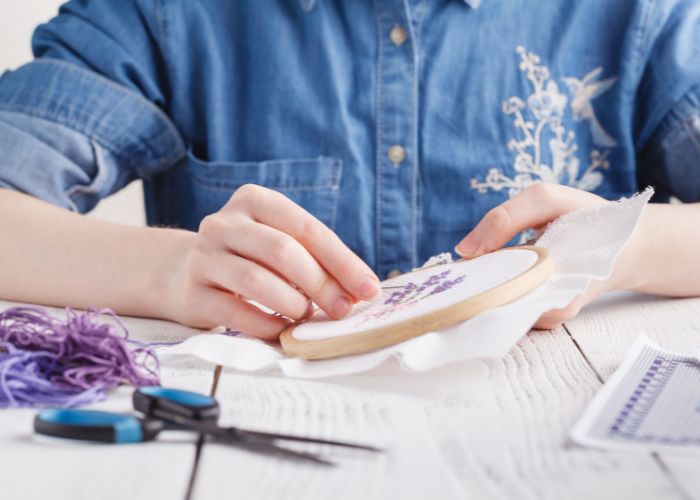
As in mindful coloring or drawing, you can skip the creative part and simply “color” your chosen pattern by filling it with stitches. Focus on the movement of the needle and thread, the thickness of the fabric, and the sound that each stitch creates.
3. Creativity
Another way to use embroidery as therapy is to nurture our creativity through stitching. Creativity plays a vital role in our daily lives. It drives innovation, helps with problem-solving, reduces stress, and boosts confidence.
Hand embroidery is a great creative outlet that allows you to practice new ways of expression, create visual and wearable art, and experiment with numerous techniques and materials.
“As strange as it sounds, creativity can become a habit. Making it one helps you become more productive.”
Jonathan Plucker, PhD, a psychology professor (via apa.org)
Create a habit of creating something every day, challenge yourself with new projects, and explore different embroidery styles, stitches, or materials. Your creativity will thank you!
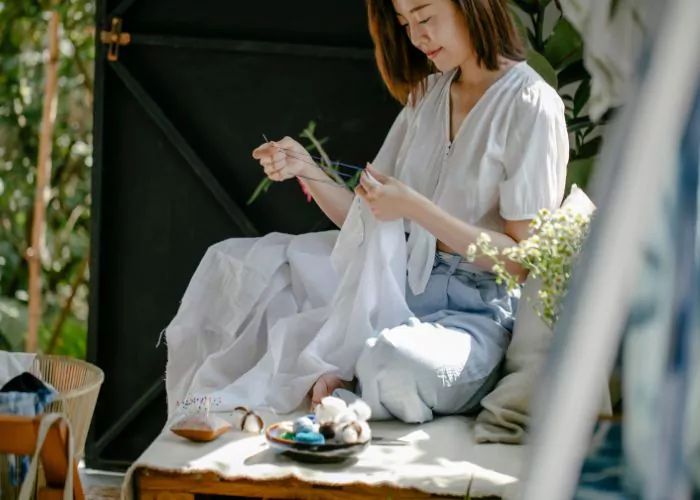
4. Self-care
Many scientific studies show numerous benefits of hand embroidery for our mental health. It can reduce stress, lower blood pressure, help overcome depression, and heal trauma.
In the modern world, hand embroidery is an easily accessible form of self-care that you can use to self-regulate your mood, slow down with slow stitching techniques, meditate and practice mindfulness, and journal or develop your creativity. Besides that, hand embroidery will help you reduce your screen time and social media consumption and, therefore, contribute to better sleep.
Incorporate hand embroidery as therapy into your daily routine, and you will benefit from better mood, sleep and enhanced relationships with your friends and family.
5. Personal development
When we think about personal development, we often think of growth, progress, self-improvement, potential, and capabilities.
Here are the skills you could improve with hand embroidery:
- Patience. Hand embroidery is a slow and time-consuming craft. Practicing hand embroidery regularly will improve your patience and ability to achieve long-term goals, maintain healthy relationships with people, and reduce stress.
- Planning skills. Implementing a hand embroidery project from the beginning to the final piece involves a lot of planning. From ideation, pattern drawing, and stitch planning to gathering the tools and materials and, finally, stitching all as planned. Embroidery is a safe place to make mistakes and get better with time.
- Improving fine motor skills. It is well known that developing fine motor skills in children is crucial for their development. Unfortunately, at the age of about 60, our fine motor skills start to reduce. To maintain our fine motor skills, we should engage in activities that require hand-eye coordination and skillfully manipulating tools, so hand embroidery is a great choice.
- Building confidence. Hand embroidery as therapy is a meditative process, a journaling medium, or a mindfulness practice. At the same time, needlework is a craft that produces a product. Making things with our own hands is one of the biggest confidence boosters.
- Constant learning. Hand embroidery is an excellent medium for building a learning muscle by learning something new daily. There are many hand embroidery styles and hundreds of hand embroidery stitches to learn. A couple of years ago, I challenged myself to learn a new embroidery stitch for 100 days. It really helps to create a habit of learning and enhances your skills immensely.
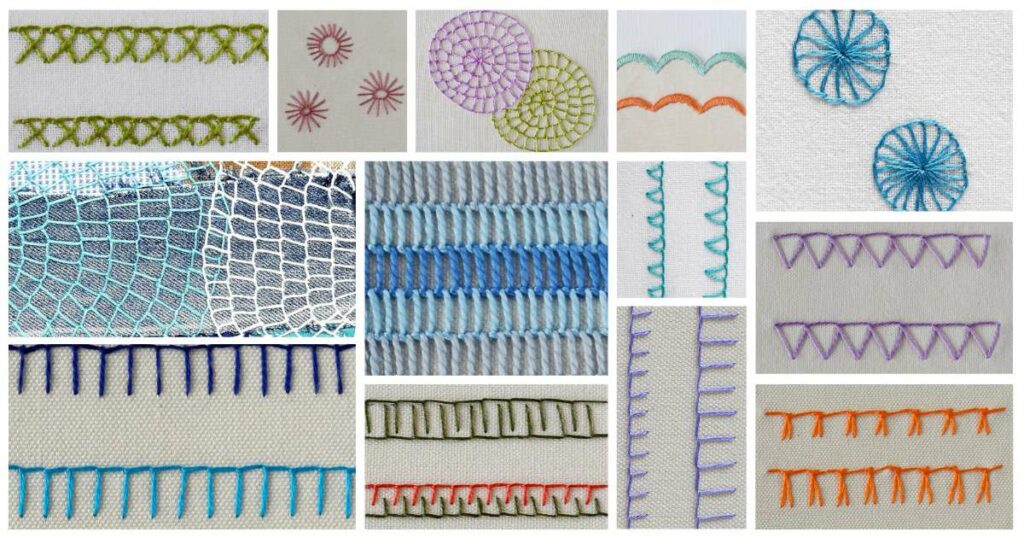
- Create a better work-life balance. Hand embroidery forces you to disconnect from screens and be more present in the moment. If you are not using your phone or computer, you are less likely to check your email after working hours or engage in work conversations. Any creative hobby away from screens will help you achieve a better, more balanced, and happier life.
6. Community
According to U.S.News, “Among U.S. adults, about one in three said they feel lonely at least once a week. Worse, one in 10 Americans say they feel lonely every day, results show.”
People are overstimulated and distracted by work, chores, and social media. In a world where everything is constantly connected, we are as disconnected as ever.
Like many other crafts, hand embroidery creates a common ground for belonging and meaningful connections online and in person. You do not have to be of the same age or social group or have any friends in common to get connected over your favorite craft. The threads that make your embroidery make connections, too!
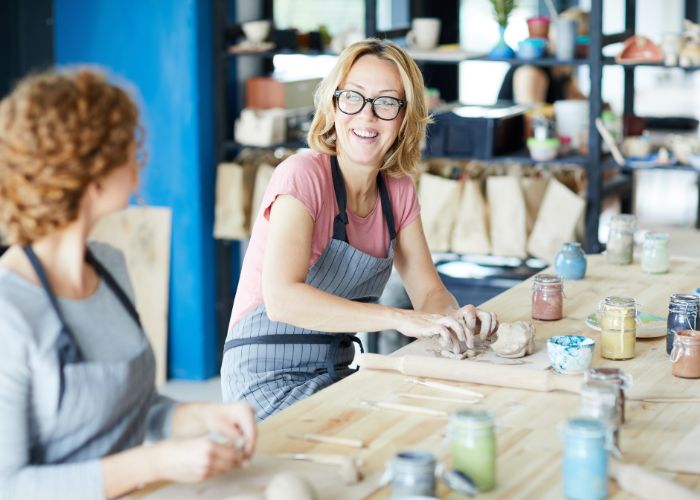
You can join your local needlework or embroidery group, participate in workshops with visiting artists, go on embroidery retreats, or visit mending cafes. Of course, you can find all of this and even more online.
7. Personal expression
Our personal expression is how we choose to display our personality to others. It is our ideas, feelings, or thoughts expressed through art—dance, music, painting, writing, or embroidery. Use hand embroidery skills to embellish your clothes or household objects and express your feelings and ideas this way. Visibly mended clothes will demonstrate your attitude towards fast fashion and environmental concerns.
I often go grocery shopping with this “No Planet B” tote bag to show my attitude toward disposable shopping bags.

As an introverted person, I like the concept of craftivism. From Wikipedia: “Craftivism is a form of activism, typically incorporating elements of anti-capitalism, environmentalism, solidarity, or third-wave feminism, that is centered on practices of craft – or what has traditionally been referred to as “domestic arts.” You can follow the @craftivists account on Instagram to learn more about the movement.
8. Art and occupational therapy
Hand embroidery is an excellent medium for art therapy. It creates positive experiences and lets people play and feel the joy of creation. Needlework allows patients to free themselves from destructive patterns and recreate a positive connection between internal and external mental space.
Simplicity, repetition, and structure are the features that make hand embroidery effective in art therapy. Rhythmic work and a sense of accomplishment are other beneficial factors.
Embroidery was widely used as therapy for British, Australian, and New Zealand soldiers wounded in the First World War.
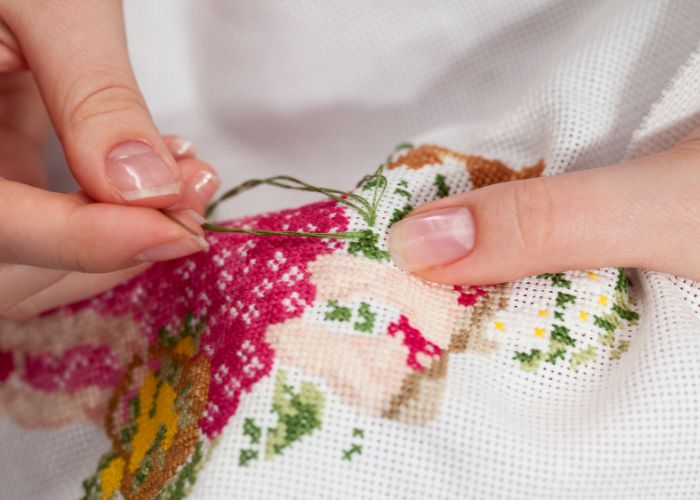
Over to you
We can use hand embroidery as therapy in many different ways—from gratitude journaling to mindfulness practices, from self-development to craftivism, and from self-care to occupational therapy.
Did I convince you to use hand embroidery to boost your mental health and live better? If so, which method will you try first?
References
- How embroidery therapy helped first world war veterans find a common thread
- The state of loneliness and social isolation research: current knowledge and future directions
- The Therapeutic Aspects of Embroidery in Art Therapy from the Perspective of Adolescent Girls in a Post-Hospitalization Boarding School
- Strengthening the Healthy Adult Self in Art Therapy: Using Schema Therapy as a Positive Psychological Intervention for People Diagnosed With Personality Disorders
- Embroidering as a transformative occupation
- Exploring the potential of embroidering as a therapeutic intervention in occupational therapy
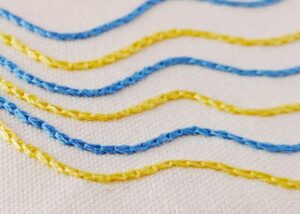

More hand embroidery inspiration:
- Benefits of hand embroidery: 10 reasons to learn hand embroidery today
- Visible Mending Ideas, Techniques and Inspiration to Transform Your Clothes
- Stitch Your Heart Out: Discover Unique Valentine’s Day Embroidery Designs
- Hand embroidery designs with books: 15 fun and charming embroidery patterns for book lovers


